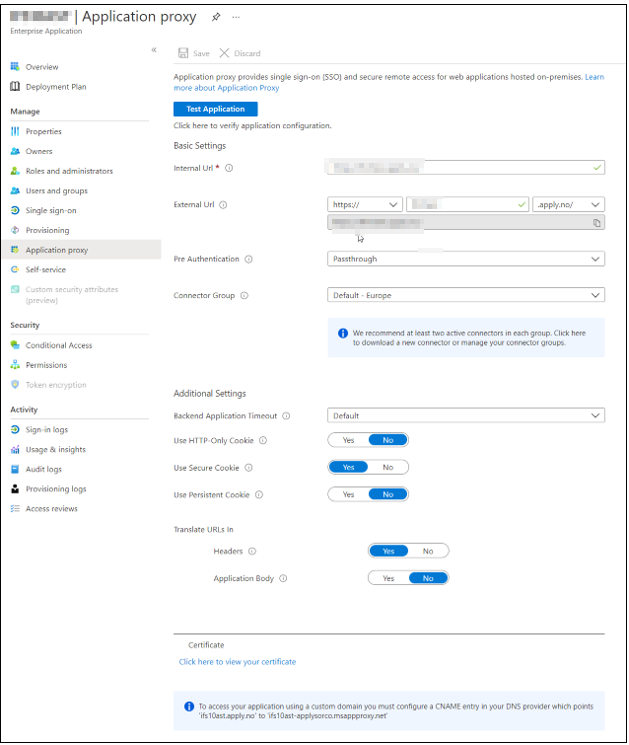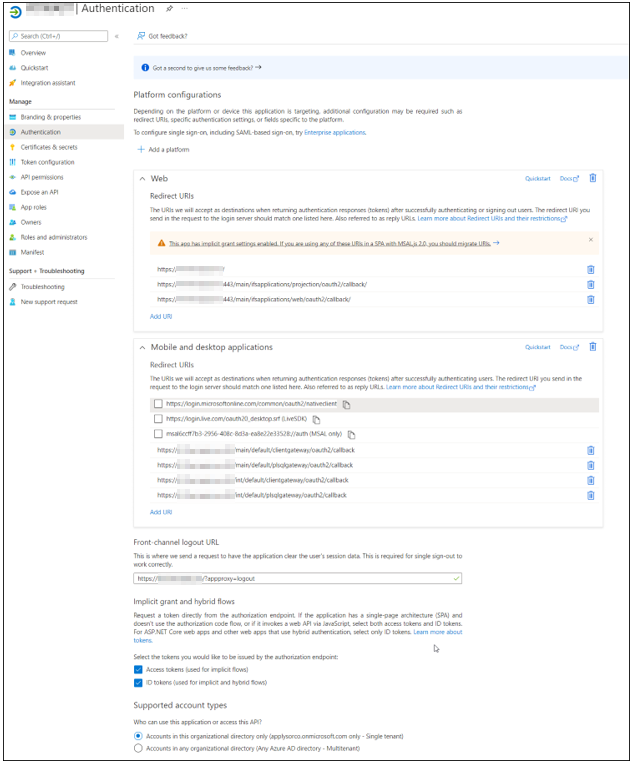When publishing IFS IEE on the internet, we couldn’t find any settings to configure IEE to work with preauthentication through Azure Application Proxy. Does anyone knows if this is possible?
Please see recommendation from Microsoft here: Security considerations for Azure Active Directory Application Proxy | Microsoft Docs





